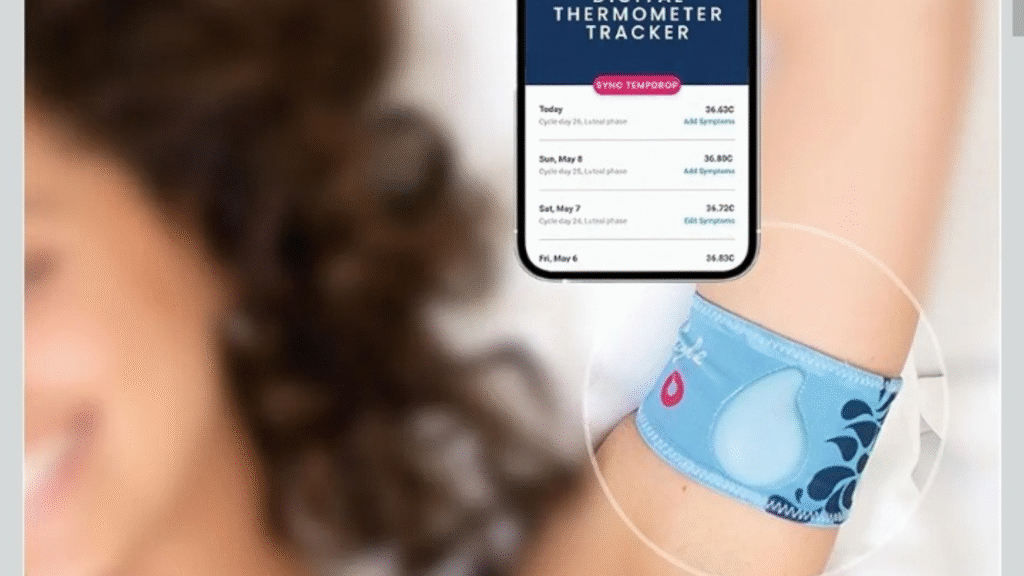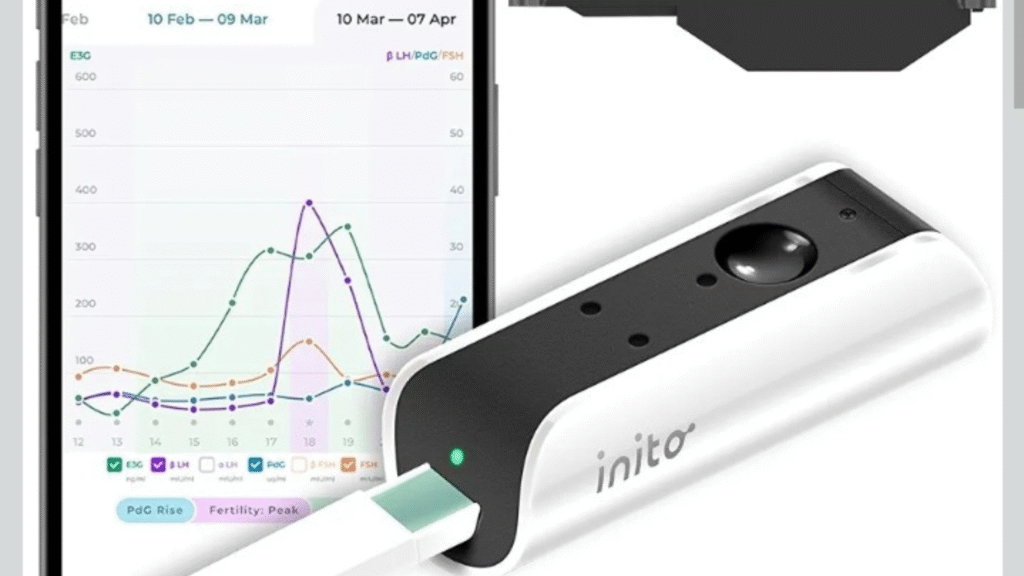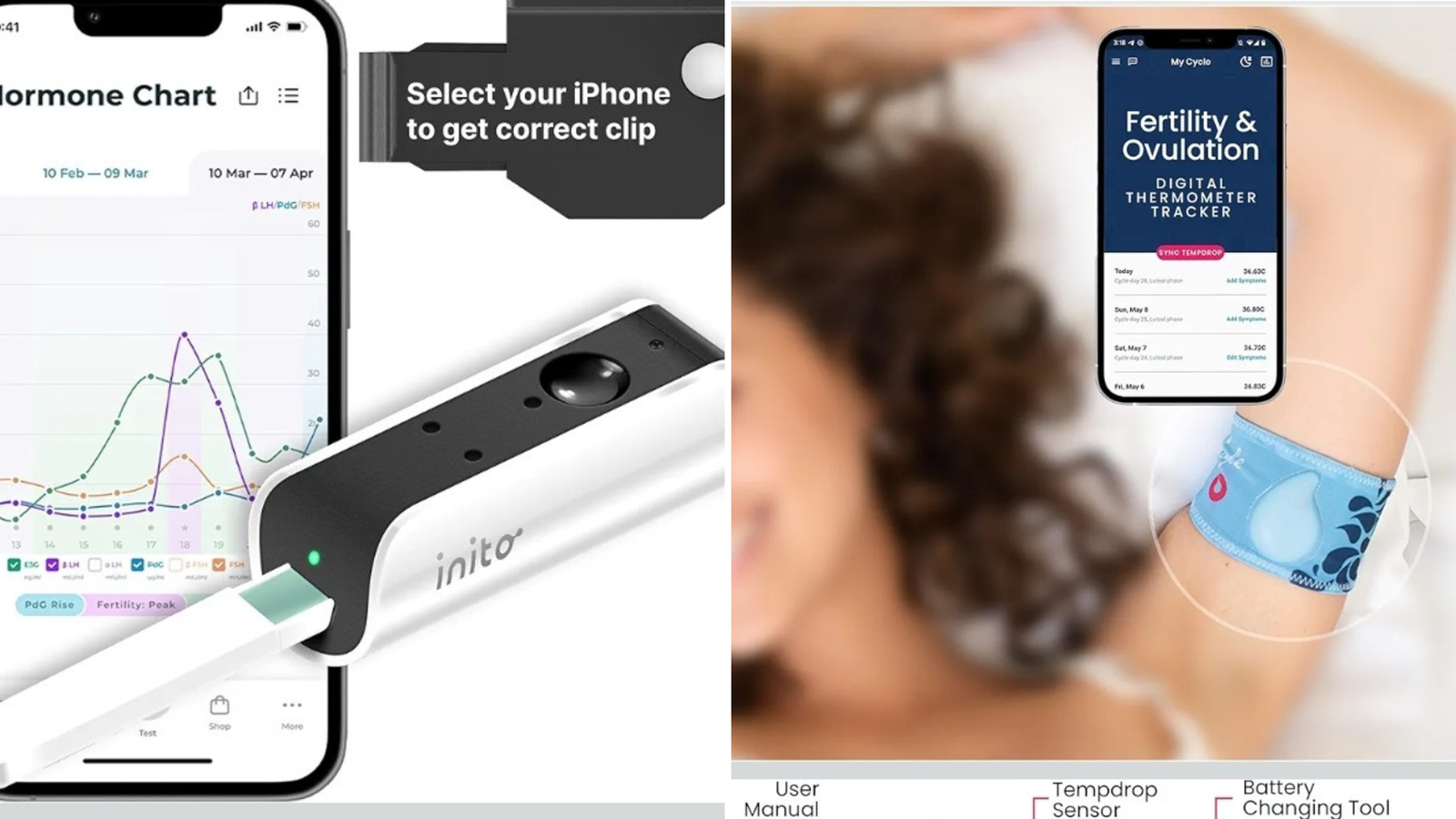In this review, two very popular and technologically oriented devices will be analyzed and compared side by side with respect to the features they offer.
If you’re interested in improving your sexual health and general health especially as a woman, technology can as well help you in enhancing your health’s productivity.
Tempdrop and Inito represent such technologies that can indeed help you as a user to improve your health and make you get the results you’d desired.
Both of these devices provide you as a user with special perks and features that will be valuable to you as a tool in monitoring a number of several health metrics.
To save from trials and errors, your continuous engagement with this article will give you more enlightenment on these two devices and will help you get adequate insights that will streamline your aura of choice making.
In a rush?
Key Takeaway:
Tempdrop
- Wearable BBT sensor
- Tracks temperature during sleep
- Great for irregular sleep schedules
- No hormone tracking
- Passive, hands-free use
- Buy here on Amazon
Inito
- Hormone test kit (urine-based)
- Tracks LH, estrogen, and progesterone
- Ideal for TTC (trying to conceive)
- Requires active testing
- Provides detailed hormone insights
- Buy here on Amazon
Tempdrop Description

This device tracks your basal body temperature (BBT) as you sleep and provides you as a user with readings that are correct and precise as the device registers your BBT following your most prolonged sleep as you wear it on your arm.
Tracking your basal body temperature (BBT) is a very major significance in a woman’s fertility in understanding the menstrual cycle and helping you as an individual user to raise your chances of conceiving.
The device features a wearable sensor and it syncs at your convenience and makes use of the data collected to help you draw informed conclusions as regarding your ovulation status which is vital when you’re making use of the Fertility Awareness Method (FAM) as a natural birth control option or if you are using FAM to time conception.
Tempdrop Pros and Cons
Pros
• Works and sync well with smartphone tracking apps.
• Available with one year warranty from the manufacturer.
• Easy to use and comfortable to put on.
• Comes in two sizes (standard armband and large armband).
• Tracks sleep as added metric.
• Comes with a replaceable battery that doesn’t require daily charging.
Cons
• Over-reliance on its app as regarding data interpretation and issuing insights.
• Besides the basal body temperature (BBT), it’s limited in adequately tracking other health metrics like heart rate and a user’s activity.
• Somewhat costly emphatically than the normal BBT thermometers that serves almost the same purpose.
Inito Description

This device is also a fertility monitor one that can help you track your hormone by pairing with free smartphone app that syncs the readings from your hormone monitoring onto a chart which helps to adequately predict your fertile window that signifies the best moments of conception or those times when you may have to abstain to avoid pregnancy.
This device works in such a way that when you wake immediately in the morning, you pee on a test strip and connect the monitor to your phone. Aftermath, you’ll insert the test strip into the monitor and you wait for about 10 minutes, up to the time you’ll obtain your reading.
As soon as your hormone levels are automatically incorporated into your fertility chart, you will be enabled to know whether you’re near your ovulation and should be getting ready to conceive. This device offers detailed insights into your reproductive health as an individual user.
Inito Pros and Cons
Pros
• Excels in hormonal tracking/monitoring.
• Provides huge relief from pairing OPKs with BBT tracking.
• Easy to understand and use.
• Provides wider information by detecting multiple hormonal levels unlike single-use devices.
• It’s HSA/FSA eligible.
• It’s FDA registered.
• Features highly accurate predictions as regarding ovulation and fertility windows.
• Great option for PCOS.
Cons
• It is relatively costly and may not be an option for users with low budget or those who are money-cautious.
• Over-reliant on its app for data interpretation and insights.
• Serious consistency needed for best results.
• Commands additional cost via regular purchase of urine test strips.
• Does not track other metrics like heart rate or activity.
Tempdrop vs Inito (Side by Side Comparison)
• Basic Use: Both devices are considered useful tools in fertility tracking, while Tempdrop focuses primarily on tracking basal body temperature (BBT), Inito focuses primarily on tracking hormone levels.
• Cost: While Tempdrop cost varies from moderate to high, that of Inito is highly priced.
• Reliant on App: Both devices depend heavily on their apps to help users interpret the data collected to deliver the needed insights.
• Body Position Worn On: While Tempdrop is worn on the upper arm, Inito utilizes urine test strips.
• Device Design: While Tempdrop is designed as a wearable sensor, Inito runs on test strips and smartphone app.
• Precise Temperature Readings: While Tempdrop accurately measures temperature, for Inito such reading is not applicable.
• Battery Duration: While the battery life of Tempdrop device varies, for Inito such is not applicable.
FAQs
1. What is the main difference between Tempdrop and Inito?
Tempdrop is a wearable sensor that tracks basal body temperature (BBT) overnight, while Inito is a smart fertility monitor that analyzes hormone levels from urine samples. Tempdrop focuses on passive, continuous data collection, whereas Inito provides detailed hormonal insights, making them suitable for different fertility tracking needs.
2. Which is more accurate: Tempdrop or Inito?
Accuracy depends on the type of data you’re tracking. Inito offers lab-grade hormone testing for luteinizing hormone (LH), estrogen (E3G), and progesterone (PdG), which provides precise ovulation predictions. Tempdrop, on the other hand, captures consistent BBT data even with irregular sleep, offering reliable temperature trends over time.
3. Can I use both Tempdrop and Inito together?
Yes, many users combine both tools for a comprehensive fertility picture. Tempdrop offers continuous temperature monitoring, while Inito tracks real-time hormone changes. Together, they provide both physiological and hormonal insights into your cycle, which can be especially helpful when trying to conceive.
4. Which one is better for women with irregular cycles?
Tempdrop is often preferred for irregular cycles because it continuously tracks BBT regardless of sleep patterns. It doesn’t rely on fixed testing days, unlike Inito, which requires urine samples during specific cycle windows. However, both can still be beneficial when used correctly.
5. Do I need a smartphone to use Tempdrop or Inito?
Yes, both devices require smartphones. Tempdrop syncs with its mobile app via Bluetooth, displaying temperature trends and ovulation predictions. Inito uses a smartphone camera and app to scan hormone test strips and record results.
6. Is Tempdrop FDA approved?
Tempdrop is not currently FDA-approved as a medical device. It’s considered a wearable sensor for fertility tracking and is widely used as a part of fertility awareness-based methods (FABMs), but not as a diagnostic tool.
7. Is Inito FDA approved?
Yes, Inito is FDA-registered and CE-certified. Its hormone test strips meet clinical standards for accuracy, giving users confidence in the reliability of the ovulation predictions and hormone tracking it provides.
8. How long does Tempdrop take to calibrate?
Tempdrop typically takes 1–2 full cycles to calibrate for maximum accuracy. During this time, the algorithm learns your unique sleep and temperature patterns to adjust for environmental and personal factors.
9. How fast can I get results with Inito?
Inito provides results within minutes after scanning a test strip with your phone. Hormone levels are displayed immediately in the app, along with easy-to-understand fertility insights and cycle trends.
10. Which is more beginner-friendly?
Tempdrop is considered more beginner-friendly since you simply wear it at night, and the app handles the rest. Inito requires regular urine testing and may involve a learning curve when interpreting hormone charts.
11. Is Tempdrop safe to wear every night?
Yes, Tempdrop is safe for nightly use. It’s lightweight, non-invasive, and designed for continuous contact with the skin. Most users report no discomfort while wearing it overnight.
12. Is Inito messy or inconvenient?
Inito involves urine testing, which can be slightly messy for some users. However, its smart test strips and app-guided process help make the experience as hygienic and efficient as possible.
13. Can Tempdrop help confirm ovulation?
Yes, Tempdrop helps confirm ovulation by identifying a sustained rise in BBT, which typically occurs after ovulation. It doesn’t predict ovulation in advance but provides a reliable confirmation afterward.
14. Can Inito predict ovulation?
Absolutely. Inito predicts ovulation by detecting hormone surges, especially the LH peak, which occurs 24–36 hours before ovulation. It also monitors estrogen and progesterone for a full hormone profile.
15. Is Tempdrop suitable for women with PCOS?
Tempdrop can be useful for women with PCOS because it doesn’t rely on hormone levels, which may be inconsistent in PCOS. It focuses on temperature trends, offering a non-invasive way to monitor cycle patterns.
16. Is Inito effective for women with PCOS?
Yes, but with caution. Inito can track hormone fluctuations, though PCOS may cause irregular surges or confusing patterns. In such cases, it’s often used alongside other fertility tools or under medical supervision.
17. Does Tempdrop sync with fertility apps?
Yes, Tempdrop can sync with third-party fertility apps like Kindara, OvuView, and others. This allows users to interpret BBT data alongside cervical mucus and other fertility signs for a complete picture.
18. Is Inito compatible with other apps?
Currently, Inito is designed to work best with its proprietary app, which offers tailored fertility insights and hormone tracking. It does not natively integrate with most third-party apps.
19. Which is more discreet for travel or daily use?
Tempdrop is more discreet for travel—it’s worn on the arm, doesn’t require daily tests, and stores data until synced. Inito involves carrying test strips and the analyzer, which may be less convenient on the go.
20. What is the cost comparison between Tempdrop and Inito?
Tempdrop has a one-time cost for the device, ranging around $150–200. Inito has an initial cost plus recurring expenses for test strips. Over time, Tempdrop may be more cost-effective for long-term tracking.
Conclusion
As you’ve gotten to know about these two devices being discussed in this content, you must have seen the impact of technology in helping you to enhance your reproductive health as well as your overall health.
The Tempdrop and the Inito both give you as a user very specific advantages that are directly channeled towards the requirements that are needed in the monitoring of your fertility.
The major disparity as revealed from this article is that Tempdrop specifically excels in offering you correct readings as your basal body temperature is being tracked, depicting itself as a comfortable and non-intrusive option.
Looking at Inito from the other end, you can see from this article that this device specifically excels in offering you correct and detailed hormonal tracking coupled with real-time data updates. It utilizes the combination of urine test strips and a smartphone app to monitor hormone levels which include progesterone, estrogen and luteinizing hormone (LH). All these depict the device as a great option for users seeking comprehensive insights as regarding their reproductive health.
As regarding their side by side comparison especially in the case where you may want to make a prior choice between the two devices, you must be sure to have considered your major fertility tracking goals, budget, preferences as well as the consideration of which of the device you think will be more comfortable than the other to use.
Hence, getting to know more about these devices as briefly provided in this content can guide you in making realistic decisions that will meet your reproductive health needs.
Related:





